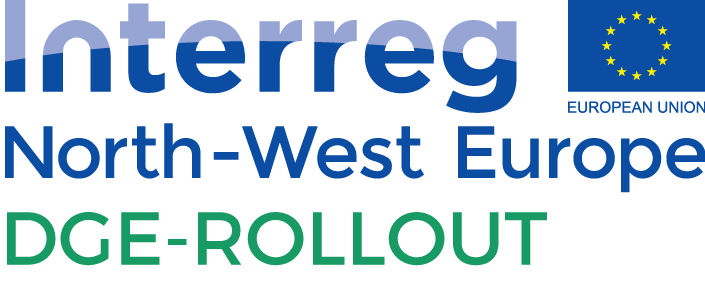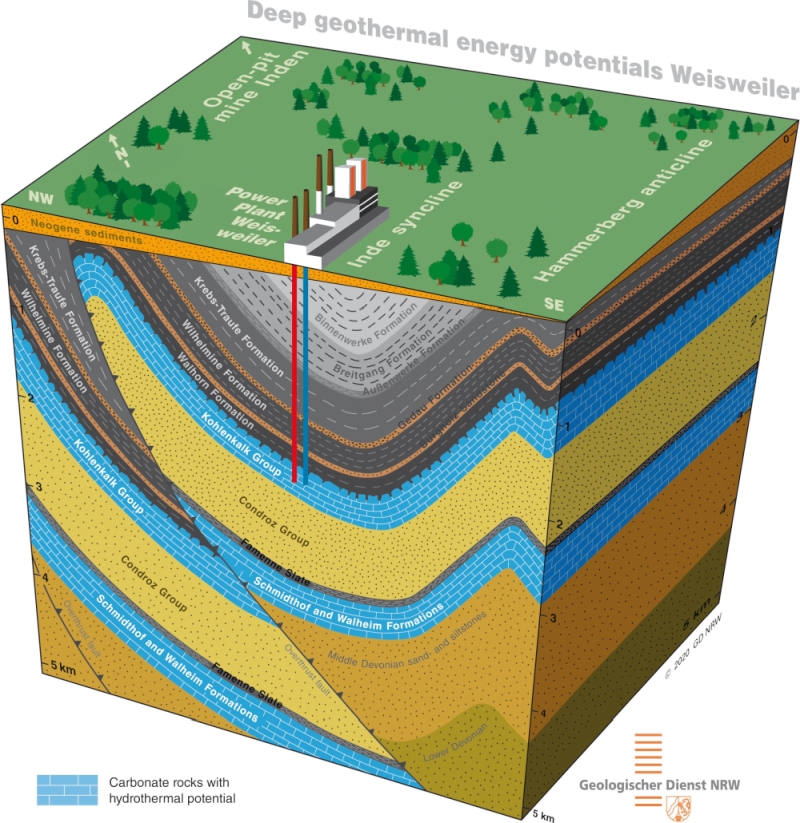Documents
Deliverables
Work package T1 - Mapping and networking:
D.T1.1.5_Updated_transnational_harmonized_depth_and_thickness_map_of_deep_geothermal_potential_in_project_area
D.T1.1.6_Easy_to_use_end_user_application
D.T1.2.1_Map_of_the_spatial_distribution_of_the_heat_demand_at_the_surface
D.T1.2.2_Investors_profiling
D.T1.2.3_Socio_economic_potential_mapping_for_DGE_France
D.T1.2.3_Socio_economic_potential_mapping_for_DGE_Wallonia
D.T1.2.3_Socio_economic_potential_mapping_for_DGE_Flanders
D.T1.2.3_Socio_economic_potential_mapping_for_DGE_Netherlands
D.T1.2.3_Socio_economic_potential_mapping_for_DGE_NRW
D.T1.2.3_Socio_economic_potential_mapping_for_DGE_URG
D.T1.2.3_Socio_economic_potential_mapping_for_DGE_NWE
D.T1.3.1_Report_legal_framework
D.T1.3.2_Report_financial_risk_management
D.T1.3.3_Recommendations_on_legal_framework_and_risk_management
D.T1.4.1_Decision_making_tool
Work package T2 - Decision and exploration support:
D.T2.1.1_Advanced_exploration_toolbox
D.T2.1.12_HEATFLOW_3D_Modelling_application
D.T2.1.13_Interpretation_of_seismic_data_in_NRW_DEK87_1A
D.T2.1.13_Interpretation_of_seismic_data_in_NRW_DEK86_2N_2Q
D.T2.1.14_Building_up_a_geological_atlas_of_the_Ruhr_Area
D.T2.1.15_Geophysical_data_acquisition_in_Hauts_de_France
D.T2.2.1_Decision_support_chart_and_standardized_decision_support_workflow_checklist_for_the_Upper_Rhine_Graben
D.T2.2.2_Economic_and_environmental_assessment_of_deep_geothermal_energy_projects
Work package T3 - Testing for production optimization:
D.T3.1.2_Evaluation_of_adapted_production_strategies
D.T3.2.1_Efficient_heat_demand_management
D.T3.2.2_Options_for_energy_cascading_and_heat_demand_management_at_Balmatt
D.T3.2.2_Options_for_energy_cascading_and_heat_demand_management_at_TRUDI
D.T3.4.2_Integration_of_geothermal_energy_in_the_Weisweiler_district_heating_grid
D.T3.4.12_Feasibility_of_geothermal_district_heating_in_Lommel_and_Bree
Work package I - Invest:
D.I.1.1_Application_form_heat_pump_system
D.I..3.1_Tested_cascading_schemes
D.I.1.2_Heat_pump_system
D.I.4.1_Best_practice_guide
Work package LT - Long term:
D.LT.1.1_Network_concept_report
D.LT.2.1_DGE_guidance_concept_report
D.LT.3.1_DGE_starters_application
D.LT.3.2_Reduce_uncertainties_of_geological_interpretation
D.LT.3.3_New_horizons_more_potential
D.LT.4.1_DGE_in_urban_district_heating_networks
D.LT.4.2_DGE_communication_strategy
Scientific publications
Arndt, M.; Fritschle, T.; Thiel, A.; Salamon, M. (2021): The DGE-ROLLOUT project: Deep Geothermal Energy potential of Carboniferous carbonate rocks in North-West Europe ‒ History, characterisation, modelling and exploration; ZDGG 172(3).
Arndt, M. (2021): 3D modelling of the Lower Carboniferous (Dinantian) as an indicator for the deep geothermal potential in North Rhine-Westphalia (NRW, Germany); ZDGG 172(3).
Bossennec, C.; Frey, M.; Seib, L.; Bär, K.; Sass, I. (2021): Multiscale Characterisation of Fracture Patterns of a Crystalline Reservoir Analogue; Geosciences 11(9), 371.
Bossennec, C.; Seib, L.; Frey, M.; van der Vaart, J.; Sass, I. (2022): Structural Architecture and Permeability Patterns of Crystalline Reservoir Rocks in the Northern Upper Rhine Graben: Insights from Surface Analogues of the Odenwald; Energies 15(4), 1310.
Broothaers, M.; Lagrou, D.; Laenen, B.; Harcouët-Menou, V.; Vos, D. (2021): Deep geothermal energy in the Lower Carboniferous carbonates of the Campine Basin, northern Belgium: An overview from the 1950’s to 2020; ZDGG 172(3).
Dezayes, C.; Petitclerc, E.; Vanbrabant, Y.; Lacquement, F.; Capar, L.; Stopin, A. (2025): The Interreg NWE DGE-ROLLOUT project: What are the contributions to the development of geothermal energy in Hauts-de-France?; Ann.Soc.Géol.Nord, T. 32 (2e série), p. 1-20.
Formhals, J.; Feike, F.; Hemmatabady, H.; Welsch, B.; Sass, I. (2021): Strategies for a transition towards a solar district heating grid with integrated seasonal geothermal energy storage; Energy, 228.
Formhals, J.; Hemmatabady, H.; Welsch, B.; Schulte, D. O.; Sass, I. (2020): A Modelica Toolbox for the Simulation of Borehole Thermal Energy Storage Systems; Energies 13(9), 2327.
Frey, M.; Bär, K.; Stober, I.; Reinecker, J.; van der Vaart, J.; Sass, I. (2022): Assessment of deep geothermal research and development in the Upper Rhine Graben; Geothermal Energy 10(18).
Frey, M.; Bossennec, C.; Sass, I. (2023): Mapping Buried Fault Zones in a Granitic Pluton Using Aeromagnetic Data; Pure and Applied Geophysics 180.
Frey, M.; Bossennec, C.; Seib, L.; Bär, K.; Schill, E.; Sass, I. (2022): Interdisciplinary fracture network characterization in the crystalline basement: a case study from the Southern Odenwald, SW Germany; Solid Earth 13(6).
Frey, M.; van der Vaart, J.; Bär, K.; Bossennec, C.; Calcagno, P.; Chrystel, D.; Sass, I. (2022): Techno-Economic Assessment of Geothermal Resources in the Variscan Basement of the Northern Upper Rhine Graben; Natural Resources Research 32.
Frey, M.; Weinert, S.; Bär, K.; van der Vaart, J.; Dezayes, C.; Calcagno, P.; Sass, I. (2021): Integrated 3D geological modelling of the northern Upper Rhine Graben by joint inversion of gravimetry and magnetic data; Tectonophysics, 813.
Fritschle, T.; Petitclerc, E.; van Melle, T.; Broothaers, M.; Passamonti, A.; Arndt, M.; Tasdemir, B.; Pederson, C.; Salamon, M. (2021): DGE-ROLLOUT: Promoting Deep Geothermal Energy in North-West Europe; Proceedings World Geothermal Congress 2020+1, Reykjavik.
Fritschle, T.; Strozyk, F.; Oswald, T.; Stubbe, H.; Salamon, M. (2021): Deep geothermal energy potential at Weisweiler, Germany: Exploring subsurface mid-Palaeozoic carbonate reservoir rocks; ZDGG 172(3).
Jüstel, A.; Humm, E.; Herbst, E.; Strozyk, F.; Kukla, P.; Bracke, R. (2024): Unveiling the Spatial Distribution of Heat Demand in North-West-Europe Compiled with National Heat Consumption Data; Energies, 17(2).
Laurent, A.; Beccaletto, L.; Averbuch, O.; Graveleau, F.; Lacquement, F.; Caritg, S.; Marc, S.; Capar, L. (2021): Modelling the 3D geometry of the Dinantian carbonate geothermal reservoir in northern France; ZDGG 172(3).
Narayan, N. S.; Adams, C. A.; Gluyas, J. G. (2021): Karstified and fractured Lower Carboniferous (Mississippian) limestones of the UK ‒ A cryptic geothermal reservoir; ZDGG 172(3).
Passamonti, A.; Bombarda, P.; Cohr Pachai, A.; Klein, S.; Schneider, C.; Bracke, R. (2024): Overview of a newly-installed high-temperature heat pump demonstrator coupled with high-temperature mine thermal energy storage; International Journal of Refrigeration 167.
Passamonti, A.; Sachse, F.; Bombarda, P.; Bracke, R. (2025): Design, construction, and commissioning of a 500 kW high-temperature heat pump plant for the district heating network of Bochum, Germany; Energy Reports 13.
Pederson, C.; Mueller, M.; Lippert, K.; Igbokwe, O. A.; Riechelmann, S.; Lersch, S.; Benger, P.; Verdecchia, A.; Immenhauser, A. (2021): Impact of a regional fault zone on the properties of a deep geothermal carbonate reservoir unit (Devonian of NRW); ZDGG 172(3).
Pharaoh, T.; Jones, D.; Kearsey, T.; Newell, A.; Abesser, C.; Randles, T.; Patton, A.; Kendall, R. (2021): Early Carboniferous limestones of southern and central Britain: Characterisation and preliminary assessment of deep geothermal prospectivity; ZDGG 172(3).
Pracht, M.; Rogers, R.; McConnell, B. J. (2021): Mississippian (Dinantian) of Ireland and its geothermal potential; ZDGG 172(3).
Seib, L.; Welsch, B.; Bossennec, C.; Frey, M.; Sass, I. (2022): Finite element simulation of permeable fault influence on a medium deep borehole thermal energy storage system; Geothermal Energy 10(15).
van der Vaart, J.; Bär, K.; Frey, M.; Reinecker, J.; Sass, I. (2021): Quantifying model uncertainty of a geothermal 3D model of the Cenozoic deposits in the northern Upper Rhine Graben, Germany; ZDGG 172(3).


